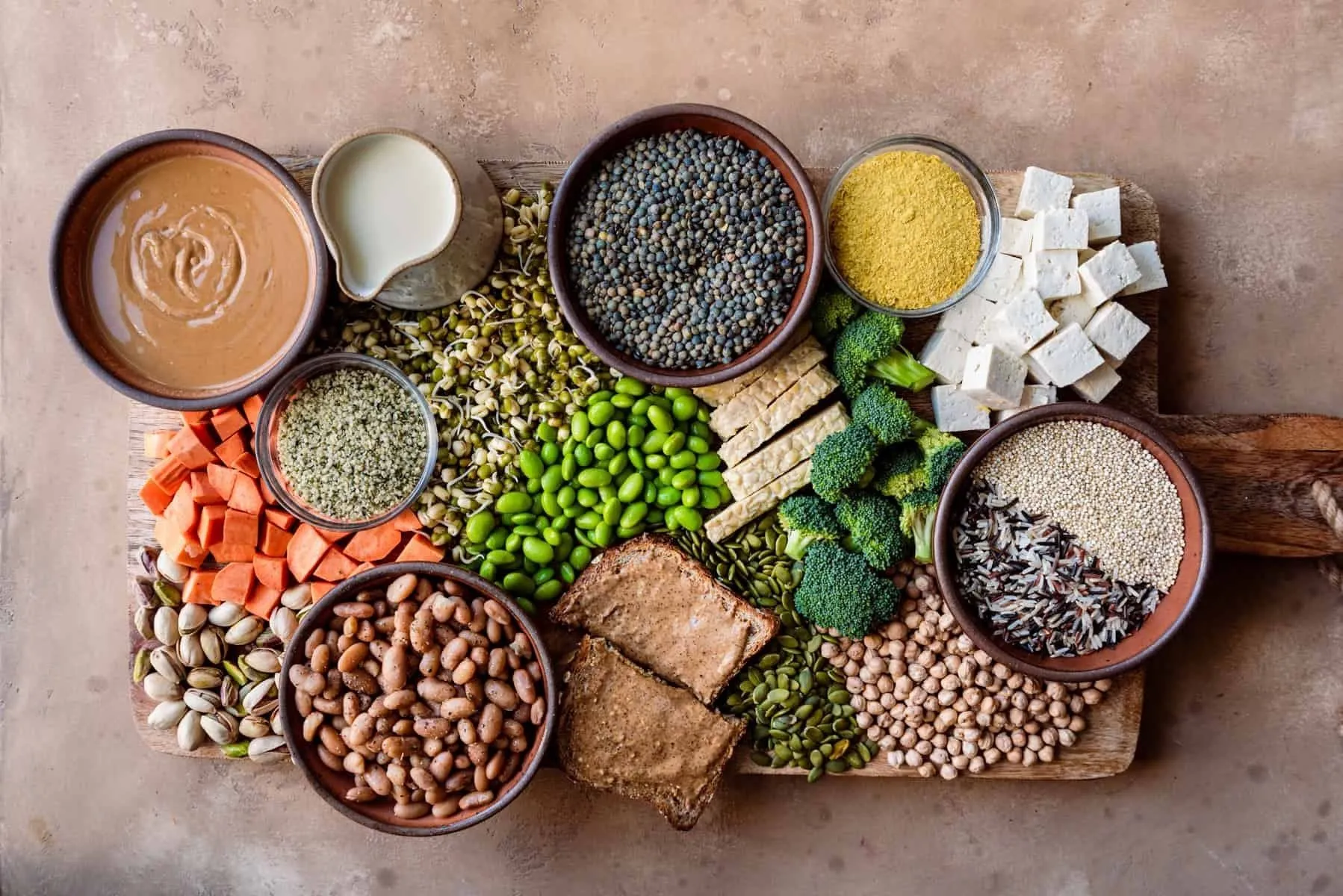
Я знаю, що ви любите пости-чарівні пігулки. Але вони працюють тільки якщо інше (раціон, рух і хоча б наблизитися до адекватної корекції стресу, включаючи паузи на розслаблення).
Безсоння є серйозною загрозою для здоров'я, це заперечувати не можна. За останні 15-20 років люди і так стали спати на 2 години менше і це погана статистика, оскільки автоматично порушується гормональний каскад, відновлення, погіршується природний детокс та утилізація відходів, підвищується ризик хронічних захворювань та імунної дисфункції.
Статті "меню для сну" гуляють по соцмережах.
Зазвичай це точковий набір продуктів, який підкреслює якісь нанограми чи хоча б міліграми: мигдаль – джерело мінералів – фосфор, кальцій, марганець, магній + рибофлавін. Магній допоможе розслабитись. Волоські горіхи - "багато" альфа-ліноленової кислоти (АЛК), опосередковано допомагає підвищити рівень серотоніну, допоможе розслабитися. Ромашка містить апігенін, зв'язується з рецепторами мозку, сприяє засинанню. Чай з пасифлори теж + вона може збільшити вироблення ГАМК, яка допомагає при стресі та тривозі. І т.д.
Але я сьогодні зібрала цікавіше: мелатонін у їжі.
Мелатонін - основний гормон шишковидного тіла, доносить інформацію про нормальність ритмів у тілі до органів і тканин. А ще, мелатонін – відома протизапальна та антиоксидантна молекула, ефективна за рахунок зниження проникності судин, зменшення занепокоєння, покращує якість сну, навіть було введено в рекавері протоколи COVID-19, нейродегенеративних захворювань.
Мелатонін у їжі (у дозі схожій на робочу), на порцію продукту:
Фрукти
- полуниця
- виноград
- кисла вишня
Овочі
- томати
- солодкий перець та паприка
- гриби (лісові)
Бобові, горіхи та насіння
- все пророщене: паростки сої, пророщений маш, сочевиці
- фісташки
Трави
- шоломник
- звіробій
Олії
- льняне сиродавлене
Зерна
- старі сорти кукурудзи
- нешліфований рис
Тварини продукти
- яйця
- жирна риба
- птах повністю (зі шкіркою, зв'язками, хрящами)
- цільне молоко (не гомогенізоване пріоритетно)
1. Lerner A.B., Case J.D., Takahashi Y., Lee T.H., Mori W. Isolation of melatonin, a pineal factor that lightens melanocytes. J. Am. Chem. Soc. 1958;80:2587. doi: 10.1021/ja01543a060. [CrossRef] [Google Scholar]
2. Brown G.M., Pandi-Perumal S.R., Trakht I., Cardinali D.P. Melatonin and its relevance to jet lag. Travel Med. Infect. Dis. 2009;7:69–81. doi: 10.1016/j.tmaid.2008.09.004. [PubMed] [CrossRef] [Google Scholar]
3. Pandi-Perumal S.R., Srinivasan V., Poeggeler B., Hardeland R., Cardinali D.P. Drug Insight: The use of melatonergic agonists for the treatment of insomnia-focus on ramelteon. Nat. Clin. Pract. Neurol. 2007;3:221–228. doi: 10.1038/ncpneuro0467. [PubMed] [CrossRef] [Google Scholar]
4. Li R., Luo X., Li L., Peng Q., Yang Y., Zhao L., Ma M., Hou Z. The protective effects of melatonin against oxidative stress and inflammation induced by acute cadmium exposure in mice testis. Biol. Trace Elem. Res. 2016;170:152–164. doi: 10.1007/s12011-015-0449-6. [PubMed] [CrossRef] [Google Scholar]
5. Chen S.J., Huang S.H., Chen J.W., Wang K.C., Yang Y.R., Liu P.F., Lin G.J., Sytwu H.K. Melatonin enhances interleukin-10 expression and suppresses chemotaxis to inhibit inflammation in situ and reduce the severity of experimental autoimmune encephalomyelitis. Int. Immunopharmacol. 2016;31:169–177. doi: 10.1016/j.intimp.2015.12.020. [PubMed] [CrossRef] [Google Scholar]
6. Oxenkrug G., Requintina P., Bachurin S. Antioxidant and antiaging activity of N-acetylserotonin and melatonin in the in vivo models. Ann. N. Y. Acad. Sci. 2001;939:190–199. doi: 10.1111/j.1749-6632.2001.tb03626.x. [PubMed] [CrossRef] [Google Scholar]
7. Li F., Li S., Li H.B., Deng G.F., Ling W.H., Wu S., Xu X.R., Chen F. Antiproliferative activity of peels, pulps and seeds of 61 fruits. J. Funct. Foods. 2013;5:1298–1309. doi: 10.1016/j.jff.2013.04.016. [CrossRef] [Google Scholar]
8. Anisimov V.N., Popovich I.G., Zabezhinski M.A., Anisimov S.V., Vesnushkin G.M., Vinogradova I.A. Melatonin as antioxidant, geroprotector and anticarcinogen. Biochim. Biophys. Acta. 2006;1757:573–589. doi: 10.1016/j.bbabio.2006.03.012. [PubMed] [CrossRef] [Google Scholar]
9. Pandi-Perumal S.R., BaHammam A.S., Brown G.M., Spence D.W., Bharti V.K., Kaur C., Hardeland R., Cardinali D.P. Melatonin antioxidative defense: Therapeutical implications for aging and neurodegenerative processes. Neurotox. Res. 2013;23:267–300. doi: 10.1007/s12640-012-9337-4. [PubMed] [CrossRef] [Google Scholar]
10. Pandi-Perumal S.R., Zisapel N., Srinivasan V., Cardinali D.P. Melatonin and sleep in aging population. Exp. Gerontol. 2005;40:911–925. doi: 10.1016/j.exger.2005.08.009. [PubMed] [CrossRef] [Google Scholar]
11. Agil A., Elmahallawy E.K., Rodriguez-Ferrer J.M., Adem A., Bastaki S.M., Al-Abbadi I., Fino Solano Y.A., Navarro-Alarcon M. Melatonin increases intracellular calcium in the liver, muscle, white adipose tissues and pancreas of diabetic obese rats. Food Funct. 2015;6:2671–2678. doi: 10.1039/C5FO00590F. [PubMed] [CrossRef] [Google Scholar]
12. Agil A., El-Hammadi M., Jimenez-Aranda A., Tassi M., Abdo W., Fernandez-Vazquez G., Reiter R.J. Melatonin reduces hepatic mitochondrial dysfunction in diabetic obese rats. J. Pineal Res. 2015;59:70–79. doi: 10.1111/jpi.12241. [PubMed] [CrossRef] [Google Scholar]
13. Chenevard R., Suter Y., Erne P. Effects of the heart-lung machine on melatonin metabolism and mood disturbances. Eur. J. Cardiothorac. Surg. 2008;34:338–343. doi: 10.1016/j.ejcts.2008.03.035. [PubMed] [CrossRef] [Google Scholar]
14. Esquifino A.I., Villanua M.A., Agrasal C. Effect of neonatal melatonin administration on sexual development in the rat. J. Steroid Biochem. 1987;27:1089–1093. doi: 10.1016/0022-4731(87)90194-4. [PubMed] [CrossRef] [Google Scholar]
15. Agilli M., Aydin F.N., Cayci T. The effect of body temperature, melatonin and cortisol on obesity in women: A biochemical evaluation? Clin. Nutr. 2015;34:332. doi: 10.1016/j.clnu.2015.01.006. [PubMed] [CrossRef] [Google Scholar]
16. Najeeb S., Khurshid Z., Zohaib S., Zafar M.S. Therapeutic potential of melatonin in oral medicine and periodontology. Kaohsiung J. Med. Sci. 2016;32:391–396. doi: 10.1016/j.kjms.2016.06.005. [PubMed] [CrossRef] [Google Scholar]
17. Setyaningsih W., Saputro I.E., Barbero G.F., Palma M., Garcia Barroso C. Determination of melatonin in rice (Oryza sativa) grains by pressurized liquid extraction. J. Agric. Food Chem. 2015;63:1107–1115. doi: 10.1021/jf505106m. [PubMed] [CrossRef] [Google Scholar]
18. Escriva L., Manyes L., Barbera M., Martinez-Torres D., Meca G. Determination of melatonin in Acyrthosiphon pisum aphids by liquid chromatography-tandem mass spectrometry. J. Insect Physiol. 2016;86:48–53. doi: 10.1016/j.jinsphys.2016.01.003. [PubMed] [CrossRef] [Google Scholar]
19. Muszynska B., Sulkowska-Ziaja K. Analysis of indole compounds in edible Basidiomycota species after thermal processing. Food Chem. 2012;132:455–459. doi: 10.1016/j.foodchem.2011.11.021. [PubMed] [CrossRef] [Google Scholar]
20. Yilmaz C., Kocadagli T., Gokmen V. Formation of melatonin and its isomer during bread dough fermentation and effect of baking. J. Agric. Food Chem. 2014;62:2900–2905. doi: 10.1021/jf500294b. [PubMed] [CrossRef] [Google Scholar]
21. Reiter R.J., Tan D.X. Melatonin: An antioxidant in edible plants. Ann. N. Y. Acad. Sci. 2002;957:341–344. doi: 10.1111/j.1749-6632.2002.tb02938.x. [PubMed] [CrossRef] [Google Scholar]
22. Tan D.X., Zanghi B.M., Manchester L.C., Reiter R.J. Melatonin identified in meats and other food stuffs: Potentially nutritional impact. J. Pineal Res. 2014;57:213–218. doi: 10.1111/jpi.12152. [PubMed] [CrossRef] [Google Scholar]
23. Aguilera Y., Herrera T., Benitez V., Arribas S.M., Lopez De Pablo A.L., Esteban R.M., Martin-Cabrejas M.A. Estimation of scavenging capacity of melatonin and other antioxidants: Contribution and evaluation in germinated seeds. Food Chem. 2015;170:203–211. doi: 10.1016/j.foodchem.2014.08.071. [PubMed] [CrossRef] [Google Scholar]
24. Sae-Teaw M., Johns J., Johns N.P., Subongkot S. Serum melatonin levels and antioxidant capacities after consumption of pineapple, orange, or banana by healthy male volunteers. J. Pineal Res. 2013;55:58–64. doi: 10.1111/jpi.12025. [PubMed] [CrossRef] [Google Scholar]
25. Delgado J., Terron M.P., Garrido M., Pariente J.A., Barriga C., Rodriguez A.B., Paredes S.D. Diets enriched with a Jerte Valley cherry-based nutraceutical product reinforce nocturnal behaviour in young and old animals of nocturnal (Rattus norvegicus) and diurnal (Streptopelia risoria) chronotypes. J. Anim. Physiol. Anim. Nutr. 2013;97:137–145. doi: 10.1111/j.1439-0396.2011.01251.x. [PubMed] [CrossRef] [Google Scholar]
26. Iriti M., Faoro F. Grape phytochemicals: A bouquet of old and new nutraceuticals for human health. Med. Hypotheses. 2006;67:833–838. doi: 10.1016/j.mehy.2006.03.049. [PubMed] [CrossRef] [Google Scholar]
27. Ferrari C.K. Functional foods, herbs and nutraceuticals: Towards biochemical mechanisms of healthy aging. Biogerontology. 2004;5:275–289. doi: 10.1007/s10522-004-2566-z. [PubMed] [CrossRef] [Google Scholar]
28. Oladi E., Mohamadi M., Shamspur T., Mostafavi A. Spectrofluorimetric determination of melatonin in kernels of four different Pistacia varieties after ultrasound-assisted solid-liquid extraction. Spectrochim. Acta A Mol. Biomol. Spectrosc. 2014;132:326–329. doi: 10.1016/j.saa.2014.05.010. [PubMed] [CrossRef] [Google Scholar]
29. Murch S.J., Simmons C.B., Saxena P.K. Melatonin in feverfew and other medicinal plants. Lancet. 1997;350:1598–1599. doi: 10.1016/S0140-6736(05)64014-7. [PubMed] [CrossRef] [Google Scholar]
30. González-Gómez D., Lozano M., Fernández-León M.F., Ayuso M.C., Bernalte M.J., Rodríguez A.B. Detection and quantification of melatonin and serotonin in eight Sweet Cherry cultivars (Prunus avium L.) Eur. Food Res. Technol. 2009;229:223–229. doi: 10.1007/s00217-009-1042-z. [CrossRef] [Google Scholar]
31. Wang J., Liang C., Li S., Zheng J. Study on analysis method of melatonin and melatonin content in corn & rice seeds. Chin. Agric. Sci. Bull. 2009;25:20–24. [Google Scholar]
32. Hernandez-Ruiz J., Arnao M.B. Distribution of melatonin in different zones of lupin and barley plants at different ages in the presence and absence of light. J. Agric. Food Chem. 2008;56:10567–10573. doi: 10.1021/jf8022063. [PubMed] [CrossRef] [Google Scholar]
33. Reiter R.J., Tan D.X., Burkhardt S., Manchester L.C. Melatonin in plants. Nutr. Rev. 2001;59:286–290. doi: 10.1111/j.1753-4887.2001.tb07018.x. [PubMed] [CrossRef] [Google Scholar]
34. Hardeland R., Pandi-Perumal S.R., Cardinali D.P. Melatonin. Int. J. Biochem. Cell Biol. 2006;38:313–316. doi: 10.1016/j.biocel.2005.08.020. [PubMed] [CrossRef] [Google Scholar]
35. Iriti M., Rossoni M., Faoro F. Melatonin content in grape: Myth or panacea. J. Sci. Food Agric. 2006;86:1432–1438. doi: 10.1002/jsfa.2537. [CrossRef] [Google Scholar]



